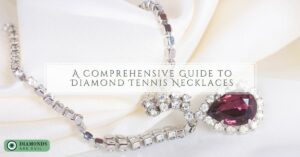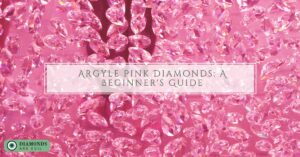You’ve probably come across quite a few publications and ads recently designed to increase awareness of rhinestone purchases whether diamond rings or diamond necklaces. So, what is the artificial diamond and how is it created? Is it a real diamond? Which jewelry is currently manufactured using this method? Here’s the complete and accurate information about rhinestones – the gems that change the world:
Somewhere in the 1940s, a number of researchers discovered that some of the natural resources we use as customary could be found under laboratory conditions. In truth, this is not a particularly revealing discovery. After all, as the world realizes that total natural resources should be eliminated, it tends to produce the same resources using special technology and without the need to exploit the environment, or switch to different substitutes to do the same, as is the case with the modern gas versus traditional oil drilling.
But in the field of diamonds, this is indeed a big news. Today, diamonds can even be manufactured under controlled laboratory conditions, so that they are perfectly identical to the real thing – the same size (carat), the same color grading and the same cleanliness.
The process of creating a laboratory diamond is so high-quality and effective that only a particular laboratory with the right technology and equipment can tell that it is a laboratory diamond. Due to the fact that the diamond can undergo a short-cut process from the jewelry inlay table without the long and complex journey of the earth – it becomes very cheap and attractive in terms of price, giving many consumers a golden opportunity to purchase diamonds as they wish, without getting too expensive.
Laboratory diamonds – Don’t call them artificial
Today, there are two types of diamonds: natural diamonds, which are obtained as a result of fiery graphite and subsurface pressure, and a laboratory diamond, obtained as a result of imitating these natural conditions between four walls. Because the term “artificial” usually refers to materials that appear to be the same, to an unprofessional eye, though actually behave completely different, the term “artificial diamonds” is fundamentally wrong.
The lab diamonds have the exact same qualities as the natural diamonds, the same durability, the same cutting and inlaying and of course the same beautiful glitter. The difference between them, in the end, is only the price.
How are artificial diamonds created (laboratory diamonds)?
As the technology advances, it is able to create diamonds physically and chemically identical to the natural diamonds, under controlled work with laboratory conditions. Also, here, like nature, the production process is of crystals.
The raw material consists of “seeds” – a kind of powder that annexes carbon atoms that produce the crystal under high pressure and temperature. The laboratory uses a high-pressure extruder, which introduces into the raw material a temperature of about 1,400 ° C and an atmospheric pressure of about 55,000. At the same time, graphite and charcoal powder are introduced into the crystal.
The extruder conducts a constant electric current throughout the diamond crystallization process and gradually raises the temperature throughout the creation process. This method produces a high production rate of about 1 carat per week (about one fifth of a gram). The difference between the laboratory diamonds and the natural ones in terms of chemical properties is only in the way the nitrogen atoms integrate with the crystal. Therefore, even the most professional gemologist will not be able to point out the difference unless he has a special laboratory instrument capable of observing the nitrogen combination within the crystal lattices.
The most common diamond type detection technology is spectroscopy (FTIR) and is performed on a diamond exchange only.
Does a laboratory diamond have the same value as the natural diamond?
The lab method brings a new era to the diamond sector and the jewelry market in particular. Since each resource derived from nature will end up with values that do not decrease, laboratory diamonds are of lower value, and you can consume them by less money.
Gifted diamonds jewelry are very sentimental and personal, and as they look and behave exactly the same way, don’t grind, crack or blacken at any point – there’s no reason to give them up and pay about 50% more for the natural diamond.
Where to buy artificial diamonds (laboratory diamonds)?
If you are interested in buying quality laboratory diamonds, which have undergone rigorous testing of the quality of the material according to international criteria, with a good high gloss, cleanliness, color and symmetry and absolute responsibility for all the diamond creation conditions and the many reviews to determine its value – It has to be purchased only from the Stock Exchange Diamonds.
The Diamond Exchange is the only place in Israel that can confirm the originality of the diamond and provide all the information about it, its features and details, including current and future valuations.
The Diamond Exchange conducts production under the highest precision of laboratory conditions, while enabling the general public to purchase high quality, sparkling and spectacular diamonds at a reasonable price.






